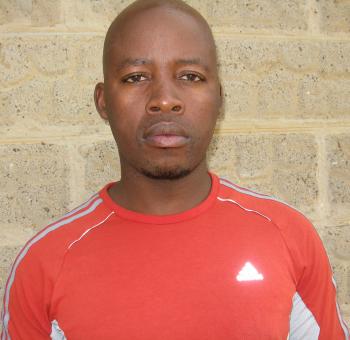Posted on July 27, 2010

In its endeavor to achieve the above, in conjunction with the community of Makhoakhoeng, on 27th March 2010, it officially opened a community hut called 'khotla' cum 'lekhotla' in the outskirts of Maseru CBD. The occasion was graced by the attendance of the Government officials, chiefs, members of the public, and non-governmental organizations. The community voluntarily made contributions for the opening, as a gesture of appreciation for the project's construction of their office. The office will not only be used for the chief's administration of the village, but also for welcoming the tourists visiting the heritage site. On the said date, another milestone in the history of Lesotho by the project was the unveiling of the national monuments prepared to relive and keep for posterity the Lesotho heritage. The monuments are those of the Basotho's monarch, politicians and the army. These are ranging from the founder of the Basotho nation Moshoeshoe I to the current Prime Minister, Mr. Pakalitha Mosisili.
At the said historic gathering and celebration, the people in attendance responded positively to the naming of the Lesotho's ten districts' representations. They chose huts to represent the Lesotho districts. The presence of the districts' representations is considered handy as it will be a vehicle by which the history of Lesotho will be interrogated and documented, as opposed to treating the districts as if they are homogenous during the policy-processes.
The purpose of the project is to record, document and present Lesotho's heritage, focusing on the national leaders. There is a scanty recording and documenting of it, with a result that the populace in Lesotho fail to grapple with national issues and understand their country's being and dynamics. This noble objective will be done by interviewing politicians, historians, reading books and newspapers, media personalities and studying videos of the national leaders as it is a planned phase.
Its other objective is to assist in the generation of employment, by creating a tourist centre. It is anticipated that the site at Makhoakhoeng will be a favorite spot where both the locals and foreigners will come to learn about the Basotho heritage. The library on Basotho works and researches will be opened, as there is a room for this purpose. It is anticipated that the employment will be created as there will be people requiring accommodation, some to work as tourist guides, and others to entertain tourists. It will also contribute to the body of knowledge, as the site will have a library and video-room on the Basotho works, researches, documentaries and history.
A biographic character will be given to the cultural landscape with the life of leaders a central focus. It will become a chief mode of negotiating the past in the public domain. It will strengthen the capacity of research on Lesotho leadership history. Its core is to promote knowledge and understanding of the history of Lesotho kingship and political leadership. On the other hand it can be viewed as a project that aims to enable people across the social spectrum in Lesotho, to foster a sense of connectedness and to promote action towards integration, appreciation and tolerance. It will also be used for purposes of dialogue and a creative mechanism of knowing Lesotho leadership history better and on a broader level, it will also address alarming rate of xenophobia discrimination. It seeks to create in the Mountain Kingdom as well as the international community an appreciation of the great historic and cultural contribution of the Basotho leaders as their blood, sweat and tears have left imprint on the spirit of Basotho as well as their culture which transformed them into a unique people. It will play a more active role in ensuring that the values of the forefathers are preserved and utilized in a sustainable manner for future posterity. It also pays tribute to the leaders who took Lesotho where it is today and to honour their courage and selflessness.
SEMPUCCCLE project is interested in discovering who the Basotho are and how they came to be where they are today. It promotes nationalism as well as international understanding since heritage is an instrument of good citizenship. It should be viewed as an institution of public culture and different meanings and as a social technology.
Sebinane Lekoekoe is a graduate of the University of Western Cape (UWC) and is currently coordinating Canadian-funded African Library Project with an NGO in Lesotho> he will be and joining the archives sector in the civil service soon.